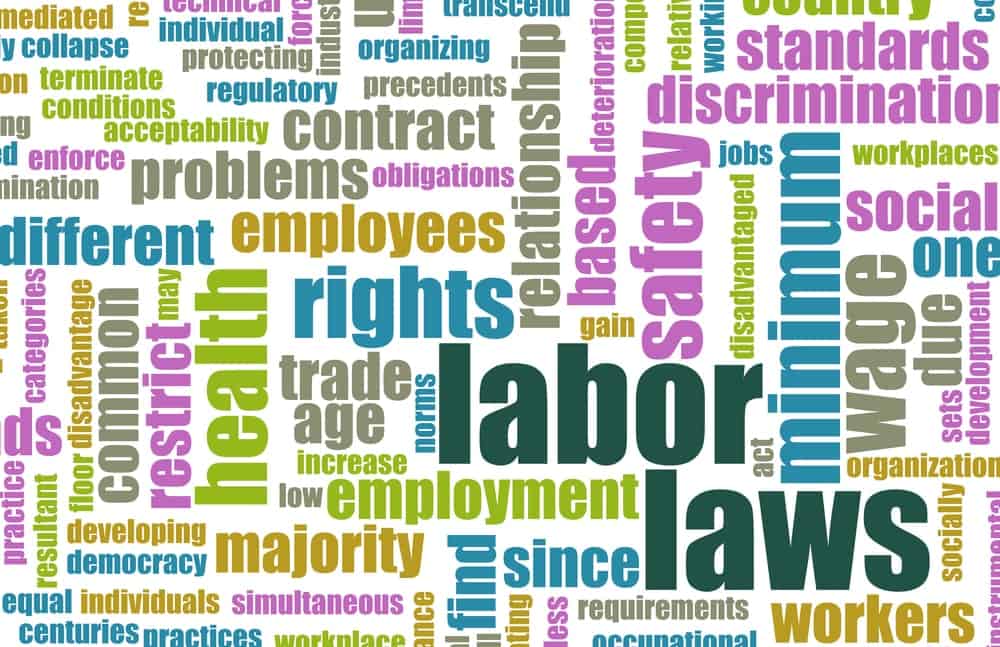
In the recent decision of Beach Place Ventures Ltd v Employment Standards Tribunal, 2022 BCCA 147, the Court of Appeal addressed the interpretation of “employee” for purposes of determining whether a relationship falls within the application of the Employment Standards Act (“ESA”).
The Court’s reasons affirm the position, expressed at common law, that there is no “monolithic concept” of an employment relationship.
More interestingly, the decision also indicates that the same relationship may be characterized differently depending on the context – that is, an individual may be considered an employee for some purposes but not others.
Learn More → Employment Standards for Employee Termination in BC
Employee VS Independent Contractor: The Background
The decision arose from separate complaints filed with the Director of Employment Standards by three individuals who operated taxis that were either leased or licenced to them by the taxi owners, shareholders of the appellant corporation Black Top Cab Inc (“Black Top”). Black Top was the sole shareholder of Beach Place Ventures Ltd (“Beach Place”), which provided administrative, accounting, and dispatch services.
The complaints alleged among other things that Black Top and Beach Place had breached the ESA by failing to make certain payments to the three drivers, including regular wages, overtime pay, statutory holiday pay and vacation pay. A delegate of the Director found the complainants were employees of the appellant corporations for the purposes of the ESA and that the appellants did in fact owe money to the complainants. An appeal by Black Top and Beach Place to the Employment Standards Tribunal (“Tribunal”), a request for reconsideration, and an appeal to the Superior Court were unsuccessful.
The appellants’ argument at all levels centred on the fact that one of the complainants had for many years considered himself for tax purposes to be an independent contractor, and a decision rendered by the Tax Court of Canada on that issue had concluded that the complainant was engaged in his own business venture and not an employee of the appellants.
The appellants argued that the Tribunal’s interpretation of “employee” was patently unreasonable, and the Tribunal had erred in failing to articulate an “intelligible, coherent and transparent” concept of employment.
THE COURT OF APPEAL’S DECISION
The Court of Appeal held that the Tribunal was not bound by the characterization adopted by the Tax Court. Pointing to the Supreme Court decision in 671122 Ontario Ltd v Sagaz Industries Canada Inc, 2001 SCC 59, the Court categorically rejected the expectation that there should be a single, fixed notion of what constitutes an “employee”:
42 The appellants’ insistence on the need for a general “conception” of who is an employee is difficult to understand. That insistence contemplates some concise, consistent and fixed expression of what constitutes an employee in different circumstances. It pre‑supposes a monolithic “conception” of employment within which there is significant consistency between the common law, other statutory schemes and the ESA.
[…]
49 What constitutes an employee under the ESA is necessarily framed by the statutory definitions in the ESA, the ESA itself and relevant jurisprudence. Beyond that, however, further insistence on the need for conceptual rigour is at odds with the recognition in Sagaz that “there is no one conclusive test which can be universally applied to determine whether a person is an employee or an independent contractor” […]”.
The Court noted that although the Sagaz decision related to a claim for vicarious liability, the Supreme Court in that decision had expressly indicated that the analytical framework and common law tests it examined were applicable in a variety of contexts, including “various forms of employment legislation”.
In addition, because the ESA is “benefits-conferring” or “program legislation”, the objectives of the legislative scheme should be given primacy. While common law principles could provide interpretive context to the ESA, the Tribunal was not required to interpret the ESA in a manner that mirrored the common law or sought to achieve harmony with it.
Ultimately, the Court found that “the unwillingness of the Reconsideration Panel to formalize a “conception” of “employee” for the purposes of the ESA was not patently unreasonable.”
EMPLOYMENT STANDARDS ACT: THE TAKE-AWAY
The approach to analyzing the existence of an employment relationship that was affirmed by the Court of Appeal in Beach Place Ventures is in line with the approach that has been applied by the Tribunal throughout its jurisprudence.
A review of that case law shows that the Tribunal has consistently understood its point of reference as, first and foremost, the statutory definitions of “employee” under the Act – one who is “entitled to wages for work performed for another” or “performs work normally performed by an employee”.
Factors identified by the common law provide a useful, secondary framework for analyzing the issue. In Sagaz, the Court provided a non-exhaustive list of potentially relevant considerations:
[…] The central question is whether the person who has been engaged to perform the services is performing them as a person in business on his own account. In making this determination, the level of control the employer has over the worker’s activities will always be a factor. However, other factors to consider include whether the worker provides his or her own equipment, whether the worker hires his or her own helpers, the degree of financial risk taken by the worker, the degree of responsibility for investment and management held by the worker, and the worker’s opportunity for profit in the performance of his or her tasks.
This list, as expanded upon by other decisions, has frequently been referenced and relied upon by the Tribunal, as well as by courts in other contexts. The Court in Beach Place Ventures noted for example that the Tribunal had expressly undertaken analysis of a collection of factors that overlapped with those proposed in Sagaz.
Beach Place Ventures is also not the first case in which the Tribunal has refused to be bound by a decision of the Tax Court.
The Court of Appeal’s decision is therefore a reminder of the fact-specific nature of the analysis in determining whether an individual qualifies as an employee or and as independent contractor.
Employers and employees alike may also want to keep in mind the decision’s reiteration that a conclusion that a worker is or is not an employee in one context may not govern the treatment that applies to that same worker in a different context.
You can book a consult with one of our experienced lawyers to discuss any of your employment law needs.

Our main hub for British Columbia is located in the heart of Vancouver. We also have a Kamloops Office for interior residents. That said, we serve the entire province of BC. We have the infrastructure to work with any of our clients virtually — even the furthest regions of British Columbia.
Call (604) 423-2646 [toll free 1-877-402-1002] to get routed to the best representative to serve you or contact us online for general inquiries.
We also have a dedicated intake form to help you get the ball rolling. Our intake team will review your specific case and advise you on the next steps to take as well as what to expect moving forward.
Our offices are generally open 8:30 a.m.—4:30 p.m., Mon—Fri.


Tanya Maas
WORKPLACE LAWYER
Tanya has extensive experience in issues relating to wrongful dismissal, notice periods, human rights and workplace investigations. She believes that clients deserve relentless protection of their legal interests within legal and ethical bounds and an aggressive approach to litigation.
PRIVACY NOTICE: Any information you provide to our office — whether your personal information or employment/employer details — will be treated as strictly confidential and will not be disclosed to your employer or to any other third party. So, please be reassured that you can talk openly to our capable Intake Paralegals worry free. Fill out an Online Inquiry or call us now, your information will be in safe and helping hands.
The Legal Review Process by Taylor Janis Workplace Law
- Taylor Janis strives for high-quality, legally verified content.
- Content is meticulously researched and reviewed by our legal writers/proofers.
- Details are sourced from trusted legal sources like the Employment Standards Code.
- Each article is edited for accuracy, clarity, and relevance.
- If you find any incorrect information or discrepancies in legal facts, we kindly ask that you contact us with a correction to ensure accuracy.


